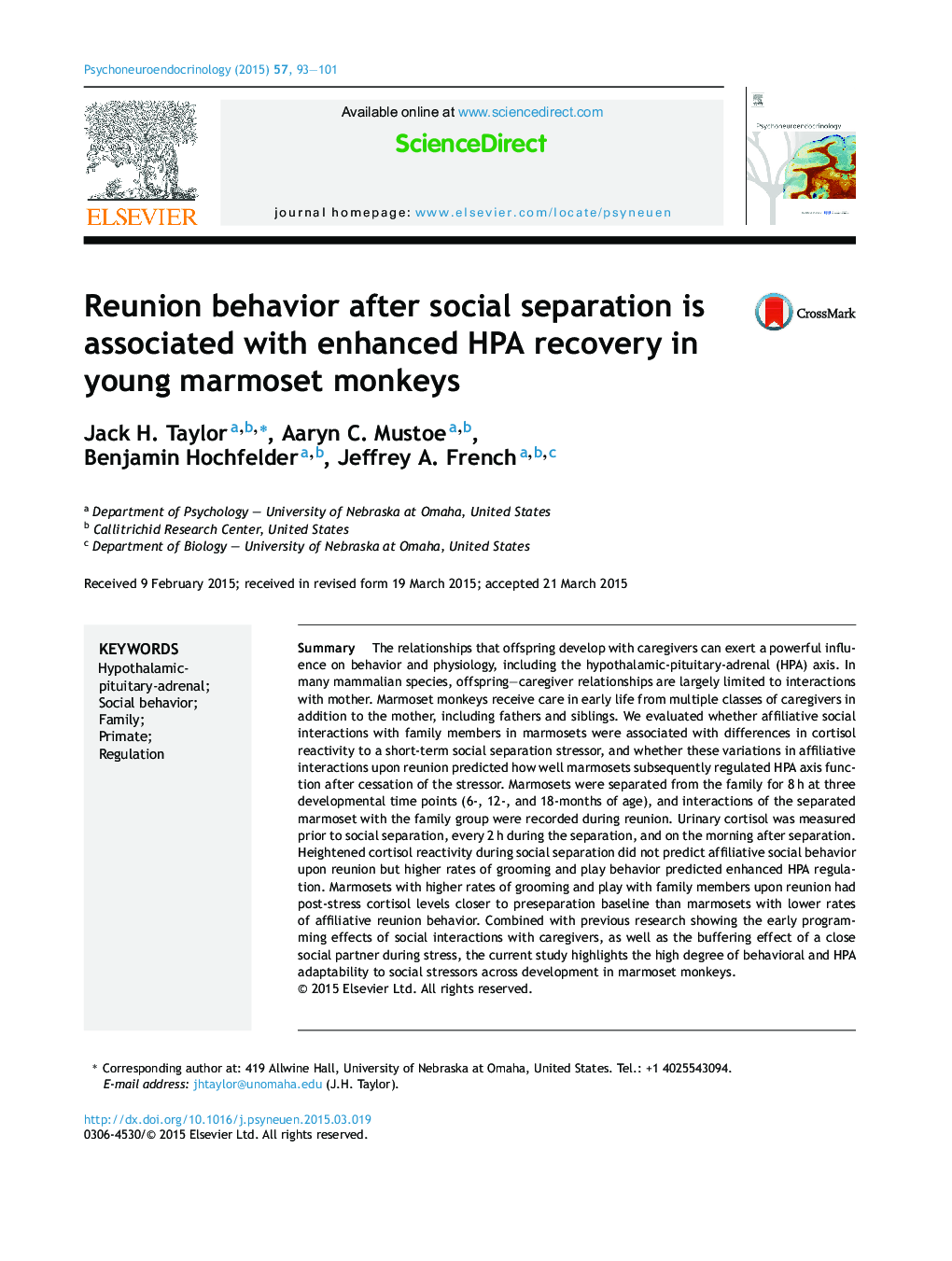| Article ID | Journal | Published Year | Pages | File Type |
|---|---|---|---|---|
| 335652 | Psychoneuroendocrinology | 2015 | 9 Pages |
•Social behavior was lower during reunion compared with undisturbed conditions.•Levels of cortisol during separation did not predict subsequent reunion behavior.•Social behavior upon reunion with the family predicted more complete HPA recovery.
SummaryThe relationships that offspring develop with caregivers can exert a powerful influence on behavior and physiology, including the hypothalamic-pituitary-adrenal (HPA) axis. In many mammalian species, offspring–caregiver relationships are largely limited to interactions with mother. Marmoset monkeys receive care in early life from multiple classes of caregivers in addition to the mother, including fathers and siblings. We evaluated whether affiliative social interactions with family members in marmosets were associated with differences in cortisol reactivity to a short-term social separation stressor, and whether these variations in affiliative interactions upon reunion predicted how well marmosets subsequently regulated HPA axis function after cessation of the stressor. Marmosets were separated from the family for 8 h at three developmental time points (6-, 12-, and 18-months of age), and interactions of the separated marmoset with the family group were recorded during reunion. Urinary cortisol was measured prior to social separation, every 2 h during the separation, and on the morning after separation. Heightened cortisol reactivity during social separation did not predict affiliative social behavior upon reunion but higher rates of grooming and play behavior predicted enhanced HPA regulation. Marmosets with higher rates of grooming and play with family members upon reunion had post-stress cortisol levels closer to preseparation baseline than marmosets with lower rates of affiliative reunion behavior. Combined with previous research showing the early programming effects of social interactions with caregivers, as well as the buffering effect of a close social partner during stress, the current study highlights the high degree of behavioral and HPA adaptability to social stressors across development in marmoset monkeys.
